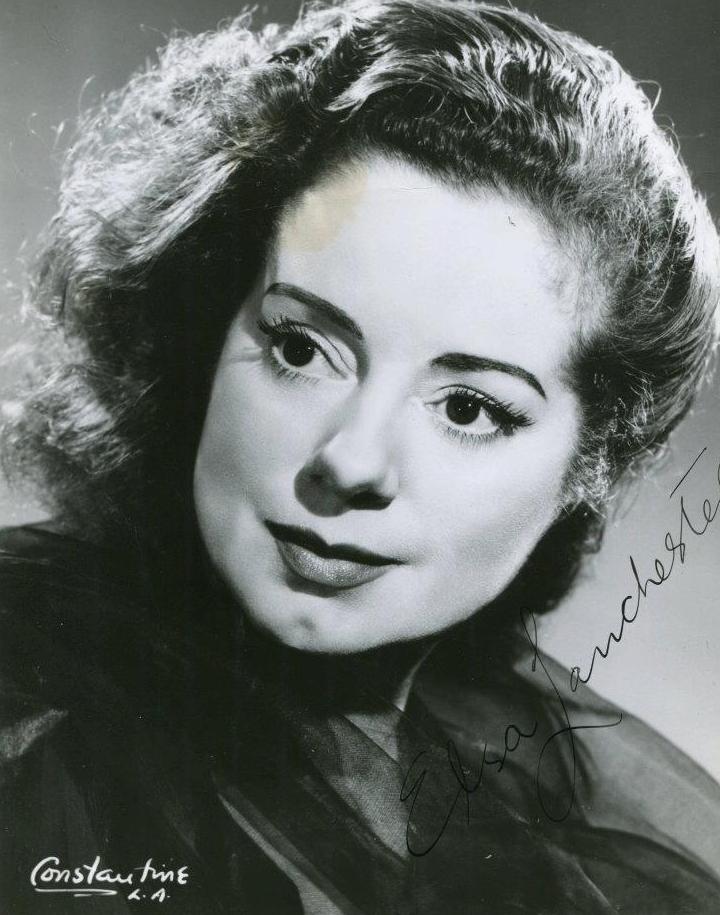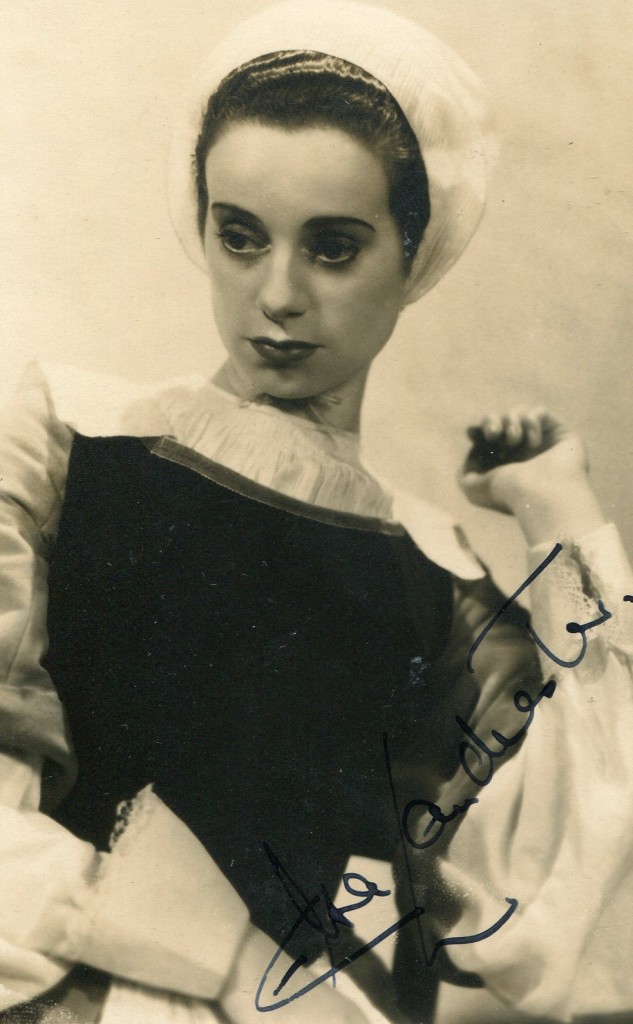

Elsa Lanchester was the character actress par excellance. When one saw her name in the credits of a movie, you eagerly anticipated her appearance becasue she enlivened all the films she appeared in. Her droll delivery was always a delight. She was born in 1902 in London. As a child she had been a dance with the troupe managed by Isadora Duncan. She married Charles Laughton in 1929. She had appeared in revue in London but went with Laughton to Hollywood in the early 1930’s. Her career was subordinated to his, which was a great pity becasue I think she was the much more talented of the two. In 1935 she made her most famous film “THe Bride of Frankenstein”. She was exceptional in “David Copperfield”, “Lassie Come Home”, “The Razor’s Edge”, “Come to the Stable”, “The Big Clock”, “Mystery Street” and “Witness for the Prosecution”. Her autobiography which was published a few years before her death in 1986. Rare footage of interview with Elsa Lanchester on the Dick Cavett Show can be viewed here.
Article on Elsa Lanchester on “Tina Aumont’s Eyes” website:
With her large eyes and upturned nose, Elsa Lanchester was not your conventional film beauty, but with her vast talent and distinctive qualities, she went on to have a fantastic career spanning 55 years, even if she was often typecast as the lovable spinster or dotty old woman.
Born Elizabeth Lanchester Sullivan in London, on October 28th 1902, Elsa held early dreams of becoming a dancer, and by 1922 was busy performing on stage. In 1924 she opened a nightclub in London, but closed it in 1928 as her film career was starting to take off. The following year Elsa married actor Charles Laughton and, although theirs was an open marriage, they would stay together until Laughton’s death in 1962.
Lanchester’s first role of note came in 1933 when, alongside Laughton, she played Anne of Cleves in ‘The Private Life of Henry VIII’, which deservedly won Laughton the Best Actor Oscar. 1935 was the breakthrough year for Lanchester when she played W.C. Fields’ maid in George Cukor’s ‘David Copperfield’, and then earned screen immortality with her portrayal of the Bride, in James Whale’s masterpiece ‘The Bride of Frankenstein’ (’35). I have always found her wild-haired creature strangely attractive, as she sashays across the screen with her arms out-stretched and making her hissing sounds. Even though it’s a brief role at the end of the picture, it remains Lanchester’s most iconic part. Another memorable performance at this time was when she played Hendrickje the maid, in Alexander Korda’s excellent biopic ‘Rembrandt’ (’36), which boasted a superb turn by Laughton in the title role.
Relocating to America in 1940, Lanchester was given some excellent supporting roles including that of Roddy McDowall’s impoverished mother in the hugely popular family drama ‘Lassie Come Home’ (’43), which brought 11 year old Elizabeth Taylor to the fore. Following minor parts in a couple of superb movies; ‘The Razor’s Edge’ and ‘The Spiral Staircase’ (both ’46), Elsa was charming as Matilda the maid, in the Cary Grant romantic comedy ‘The Bishop’s Wife’ (’47). After supporting Laughton and Ray Milland in the 1948 noir ‘The Big Clock’, Elsa received her first Oscar nomination for her fine portrayal of a religious painter in Henry Koster’s French nun drama ‘Come to the Stable’ (’49), starring Loretta Young and Celeste Holm.
After playing a countess in the 1950 Joel McCrea western ‘Frenchie’, and lusting after Clifton Webb’s former matinee idol in the excellent comedy ‘Dreamboat’ (’52), Elsa was the bearded lady in the minor Dean Martin-Jerry Lewis vehicle ‘3 Ring Circus’ (’54). A fun part followed as Leslie Caron’s witty stepmother in the delightful musical ‘The Glass Slipper’ (’55), MGM’s colourful take on Cinderella. I loved Elsa’s stuffy yet kindly nurse; Miss Plimsoll, in Billy Wilder’s superb courtroom thriller ‘Witness for the Prosecution’ (’57), sparring endlessly with Charles Laughton’s recovering barrister. Elsa would receive her second Oscar nomination for her wonderful performance. Another fun role followed with the Richard Quine sleeper ‘Bell, Book and Candle’ (’58), as witch Kim Novak’s dotty aunt.
A handful of Disney appearances came next, first with a small role as a disgruntled nanny in ‘Mary Poppins’ (’64), ‘That Darn cat!’ (’65), as a prying neighbour, and (my childhood favourite) ‘Blackbeard’s Ghost’ (’68), as an elderly descendant of Peter Ustinov’s mischievous spirit. Another eccentric role followed with the enjoyable Patty Duke vehicle ‘Me, Natalie’ (’69), as Patty’s oddball landlady, and then Daniel Mann’s interesting cult horror ‘Willard’ (’71), in which she played the ailing mother to Bruce Davison’s social outcast. Another horror, albeit a bad one, followed with ‘Terror at the Wax Museum’ (’73), slumming it alongside aging stars Ray Milland and Broderick Crawford. I loved her funny turn as Jessica Marbles, in Neil Simon’s hilarious star-filled spoof ‘Murder by Death’ (’76), playing a lovable sleuth wheeling around her childhood nurse; 93 year old Estelle Winwood. Elsa’s final movie was the pleasant Robby Benson comedy ‘Die Laughing’ (’80), before her retirement to the Hollywood hills.
On Boxing Day 1986, Elsa Lanchester died from pneumonia in her Californian home. She was 84 years old. A supremely talented actress, Elsa brought humour, mischief and warmth to a wealth of movies and television appearances. From small scene-stealing roles to large-scale melodramas, it was always a joy to see her smiling face up there on the screen. A true and unique one-off!
Favourite Movie: The Razor’s Edge
Favourite Performance: Witness for the Prosecution

